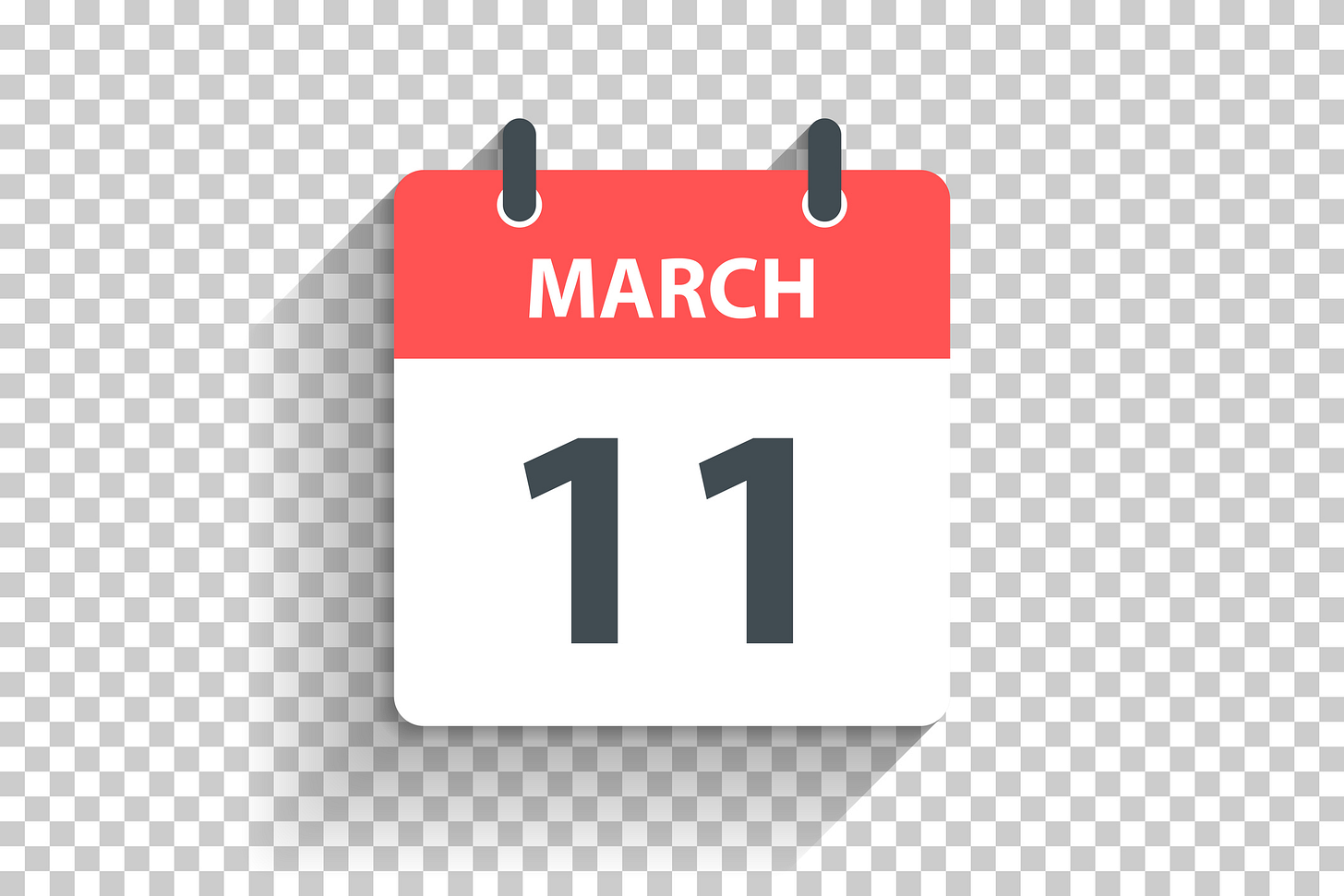March 11: Past, present, and future
Four years ago, the harsh reality of Covid hit the United States; the bottom fell out for millions of lives and livelihoods. We're in a far better place now, and where we are headed holds promise.
Today’s post may start too heavy for some with its look back on four years ago at the start of the pandemic. It’s important because it gives us context for where we are now, but if it feels like too much, skip ahead to the sections on the present and future; they are more optimistic.
The day that changed everything.
March 11, 2020, was the day Covid became real for Americans. The oral history of that day is powerful, as Garrett Graff collects in his compelling, must-read piece.
Wednesday, March 11, the 71st day of 2020, proved to be unlike any other in American history—the pivot point on which weeks of winter unease about the looming novel coronavirus turned in a matter of hours into a sudden, wrenching, nation-altering halt to daily life and routine …
… the World Health Organization, which had only begun referring to the virus as Covid-19 a month earlier, declared the disease a global pandemic. Every hour seemed to bring major new developments: On Wall Street, after days of huge up-and-down gyrations, the Dow Jones Industrial Average fell 1,465 points and officially entered bear territory; Capitol Hill faced its first confirmed Covid-19 case; the NCAA announced it would play its basketball tournament without fans; and then, in rapid-fire succession that evening, President Trump gave an Oval Office address, announcing a travel ban from Europe, the NBA suspended its season after player Rudy Gobert tested positive for the virus, and Tom Hanks and his wife, Rita, posted on Instagram that they too had been diagnosed while in Australia and were recuperating.
I am part of that oral history, too. That morning, I had the privilege of standing before the House Democrats and urging them to “go big, go broad, and go fast” with economic relief. Here’s part of what I told Graff:
Claudia Sahm: Frankly, the night before, the 10th, I was in a bit of a panic because I was worried that I was overreacting. It was like gaslighting the way Trump and Republicans and Fox News would talk about the coronavirus. Like, “We’ve got this one, it’s not a big deal. It’s like the common flu.” Listening to that, I was saying, “We need to get going.” Congress needs to do real things. That morning, I stood in front of the House Democrats at the minority whip breakfast and told them what they needed to do with a relief package. I told the House Democrats that the $8.3 billion package that they had passed the week before was an insult.
Sadly, I was not overreacting. By the end of the day, I knew I had been right to push. And Congress did go big, broad, and fast. My post on March 11, 2021 shares my remarks to the House Democrats and key points in my first year during Covid.
My reflections on March 11, 2020
I will always remember March 11, 2020. We all will. Today, one year later, I reflect. Painful as it is, we must look back to learn and move forward.
As much as anyone, I want to leave Covid in the past, but it is not in the past. Over a million Americans died from Covid, and millions more struggle with long Covid. We may be out of the ‘official emergency’ stage, but it’s still here. Now, unlike in 2020, we have a vaccine and other medical treatments, so there is progress along with scars.
What a difference four years make.
Today, March 11, 2024, we have come so far. Last Friday, we learned that 275,000 new jobs were created in February, and unemployment was 3.9%. That’s two years below 4% unemployment and millions of new jobs created.
Undeniably, we are living in the best labor market in generations—if not ever—especially for workers at the bottom and on the margins. In April 2020, the unemployment rate hit almost 15%, and now it’s one-quarter of that. What a comeback! We will learn more about inflation tomorrow. While it remains too high, the progress back to normal is also undeniable.
When you add it all up, most American families are better off financially than before the pandemic—yes, better off!
Most Americans are better off financially now than before the pandemic
Today’s post offers various facts about people’s finances sourced from representative groups of people and businesses across the country. My focus is on “better off,” not “well off,” and “most” (50% or more of people), not “all.” It’s also not about inequality or comparisons to others. Also, I’m not questioning people’s pessimism in…
We are not in a recession. The Sahm rule is well below its trigger, and look around—the economy is settling into a good and sustainable place. We did not need a recession, nor is one inevitable. Take the win, and keep pushing!
So, where do we go from here?
The past four years have been extremely painful, but we are coming out of it, and there are even signs that things could get better.
We talk a lot about what the Fed will do this year, and it is a key player in the “soft landing.” Its decisions about interest rates are the biggest economic risk this year, but Fed officials know that and are working hard to get us to the finish line in one piece. I am critical of their ‘confidence issues,” as I explain here:
The "worst possible outcome" for the Fed is an unnecessary recession, not reversing a cut
In today’s post, I explain why the Fed should cut the federal funds rate now and why they are unlikely to do so before May. Today’s public post is the big picture, and next week’s paid post will be more technical, albeit accessible. The FOMC’s next vote is on
All that said, I respect the Fed’s good judgment.
Looking beyond this year, there are many exciting possibilities. Productivity growth has picked up in the past several months. In fact, the United States is pulling away from our peer countries.
Technologies like work-from-home capabilities or artificial intelligence are likely contributing or will in the future. Three big investment packages will pay dividends, too. And don’t forget: a big factor is the strong labor market, which is lowering the barriers for many. It’s the American workers who get it done.
In closing.
March 11, 2020, began a very dark time in our history.
Blessedly, March 11, 2024, is a much better place.
We deserve it. And a good path forward is clear if we choose it.










As always, Dr. Sahm, well done. Clear, concise, and informative. I appreciate the clear-eyed optimism, too.
“go big, go broad, and go fast” with economic relief.
Yes. Relief! Not "stimulus."